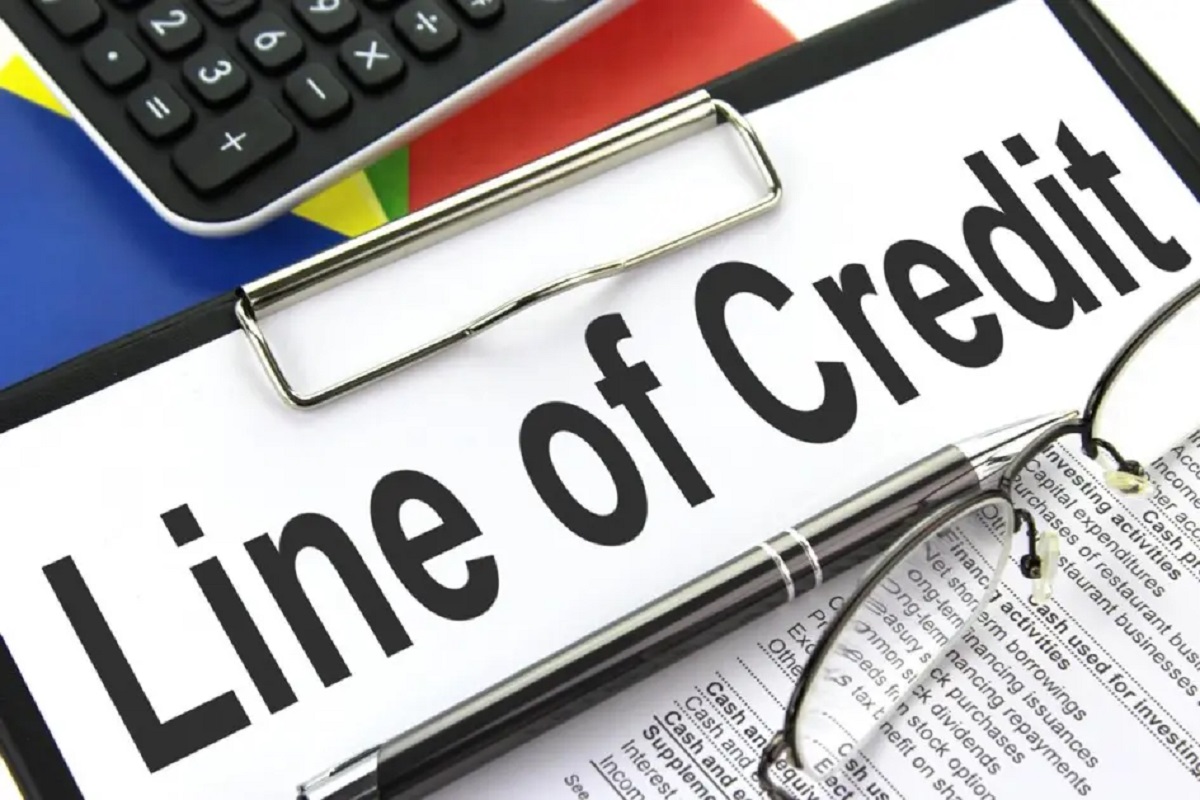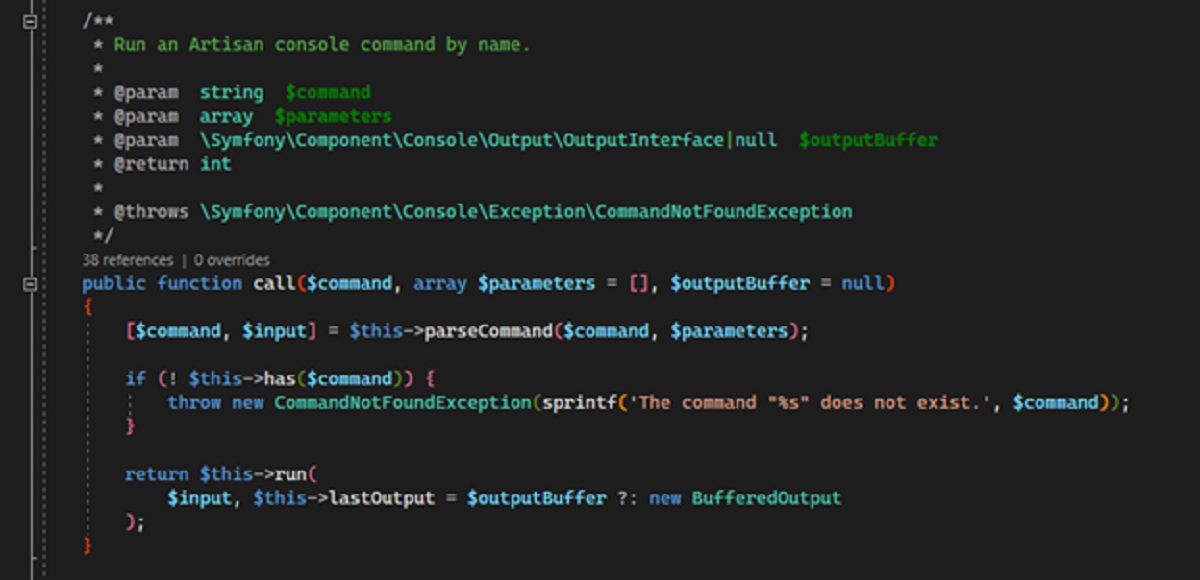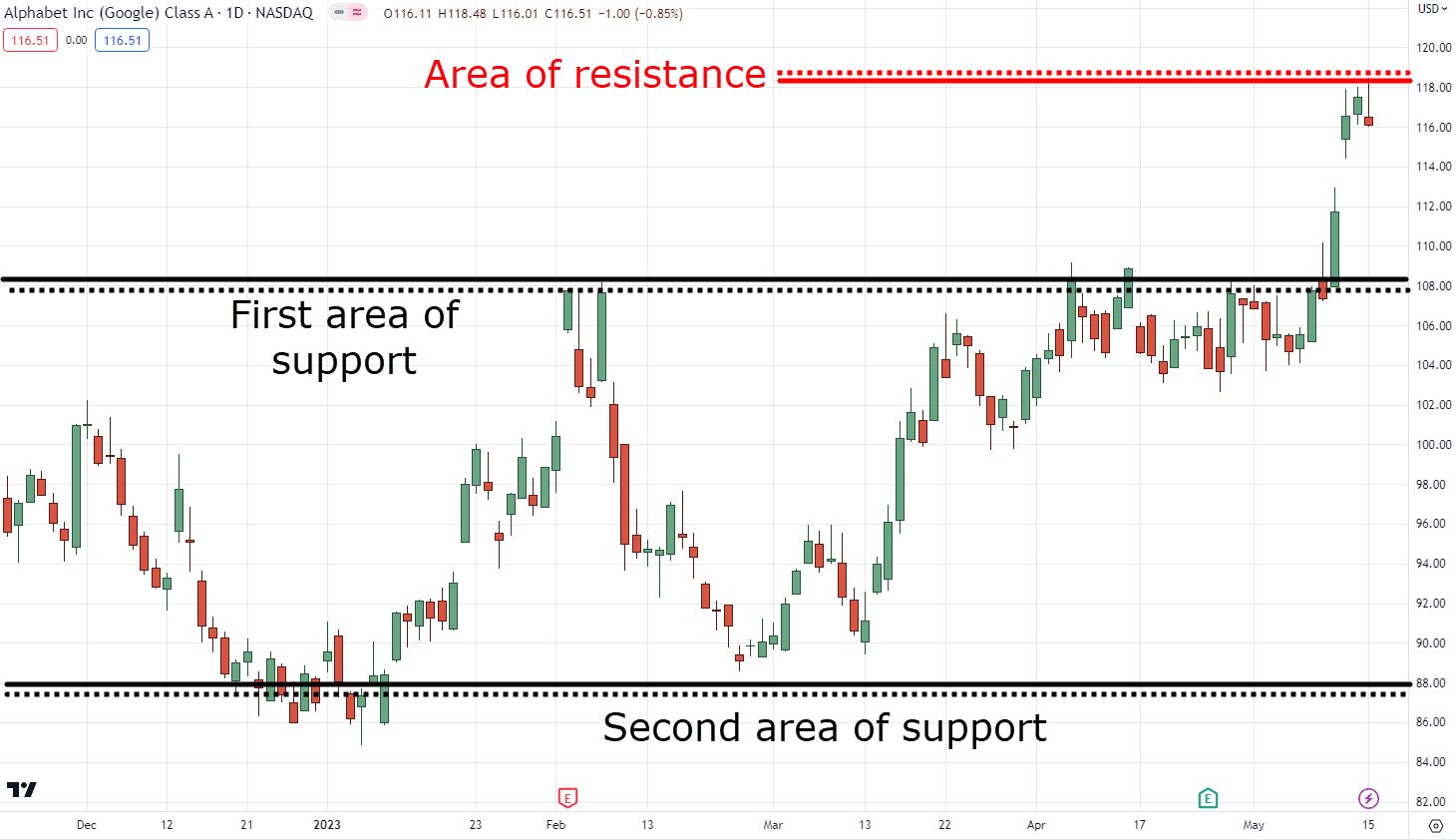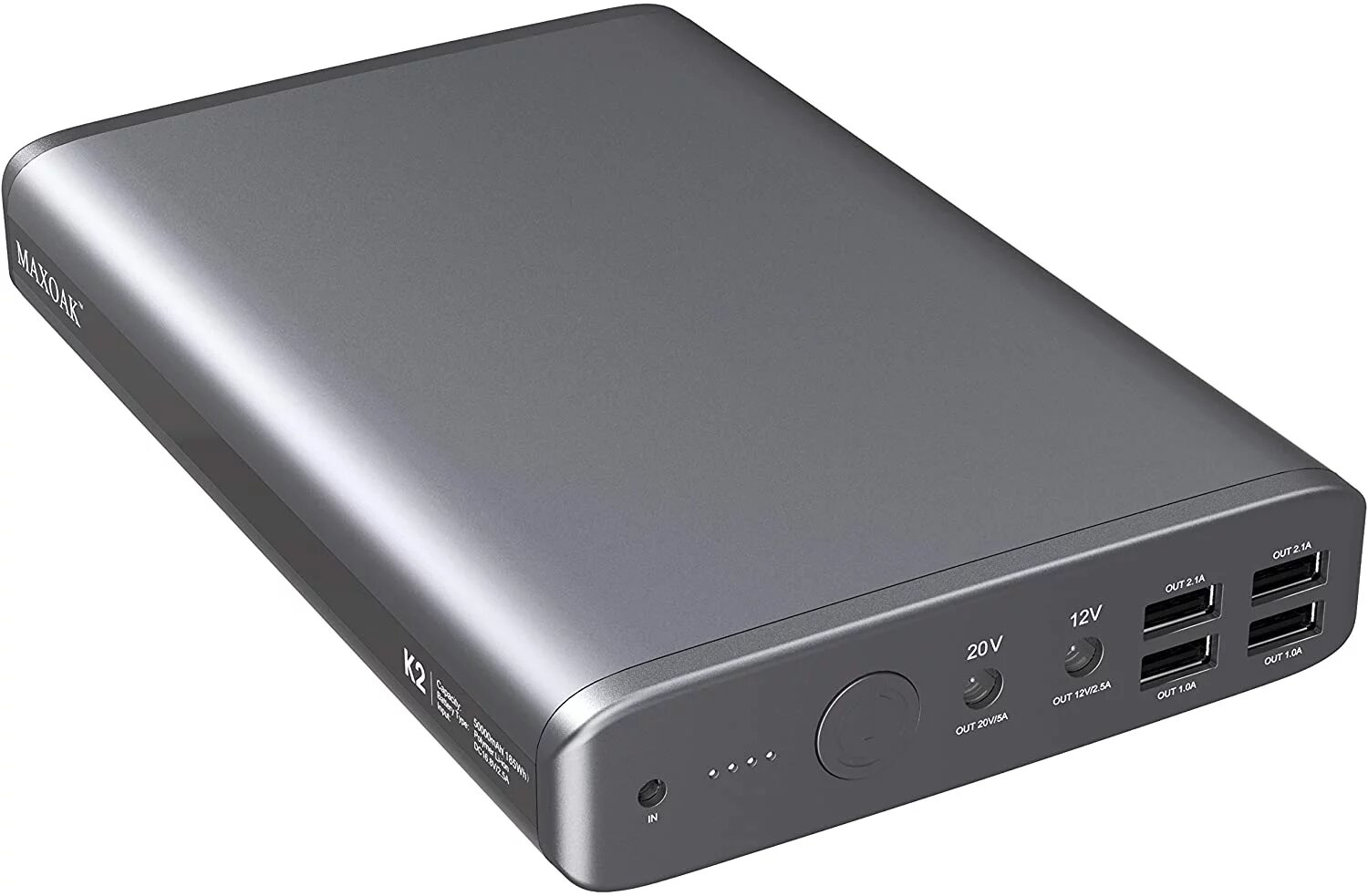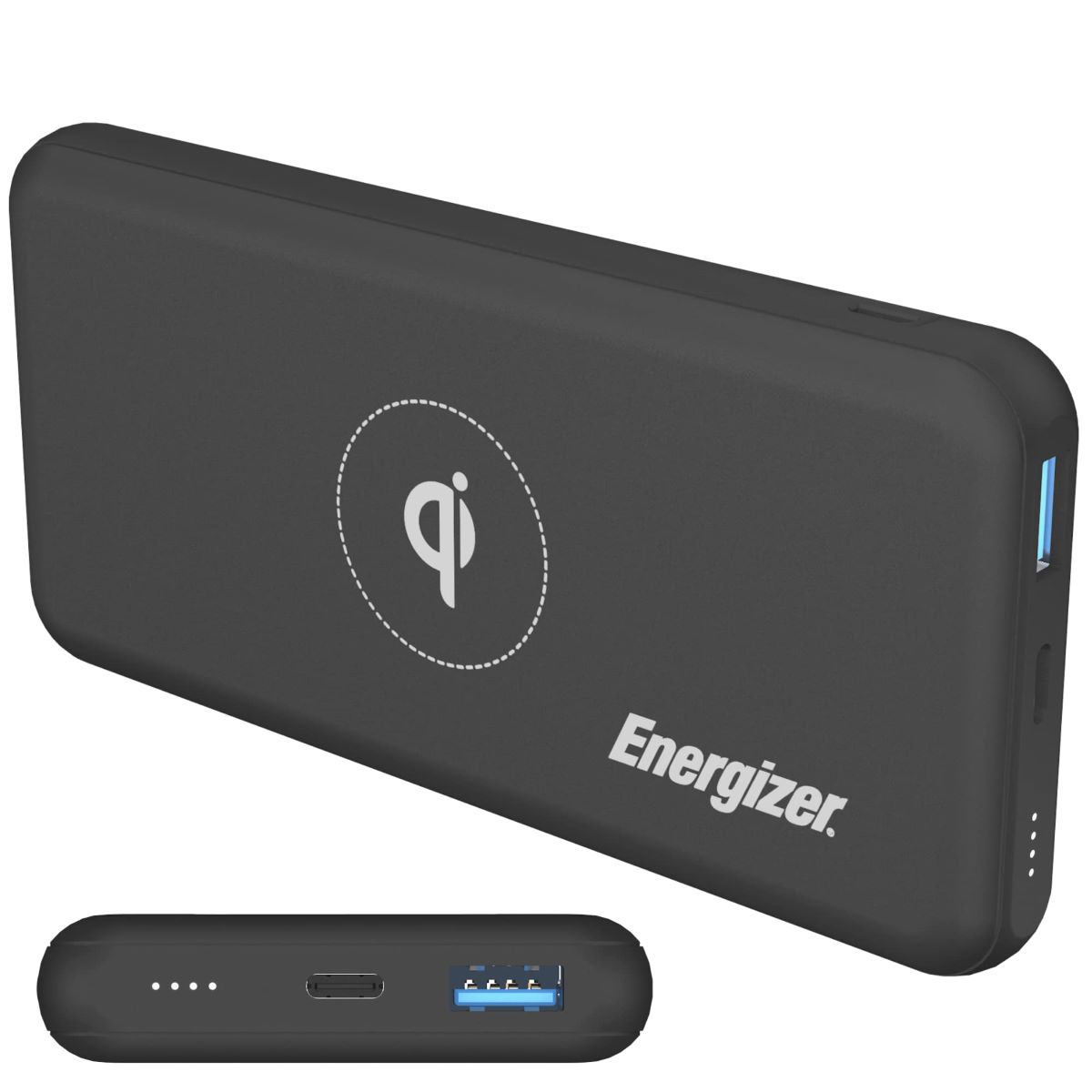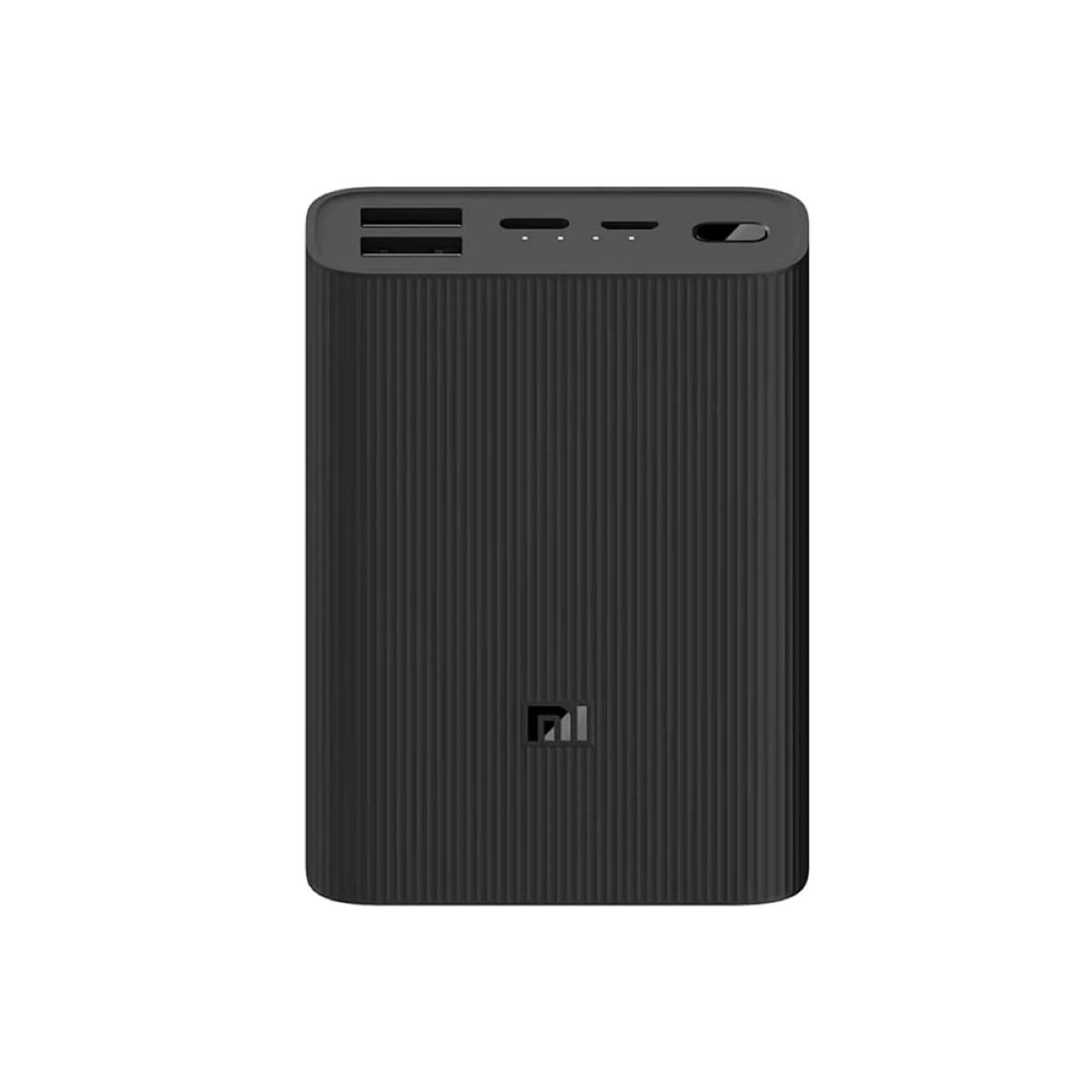Introduction
When it comes to banking, there are numerous terms and acronyms that can leave people feeling perplexed. One such term is “LOC,” which stands for Line of Credit. But what exactly does LOC mean in the banking world?
A Line of Credit (LOC) is a flexible form of borrowing that offers individuals and businesses a predetermined amount of funds that they can access on an as-needed basis. Unlike a traditional loan where you receive a lump sum upfront, a LOC allows you to withdraw and repay funds at any time within a specified limit. This type of financing can be extremely useful for various purposes, such as managing cash flow, funding unexpected expenses, or accessing capital for business growth.
Understanding how a LOC works and its advantages and disadvantages is essential for anyone considering this type of financing. In this article, we will explore these aspects in detail, providing a comprehensive guide to LOCs in the banking industry.
Whether you are an individual looking for a way to cover unforeseen expenses or a business owner in need of financial flexibility, knowing how to leverage a LOC effectively can be a game changer for your financial well-being.
In the following sections, we will delve deeper into the details of LOCs, explaining their mechanics, benefits, drawbacks, and how to qualify for one. We will also explore the different types of LOCs available and provide insights into how to use and repay them.
By the end of this article, you will have a solid understanding of LOCs and how they can be a valuable tool in your financial arsenal.
Understanding LOC
Before diving into the mechanics of a Line of Credit (LOC), it is important to grasp the fundamental concept behind this financial tool.
A LOC is a revolving credit facility that allows individuals or businesses to borrow funds up to a predetermined limit. Unlike a traditional loan where you receive a lump sum, a LOC provides you with the flexibility to withdraw funds as and when needed, up to the approved limit. Think of it as a pre-approved source of funds that you can tap into whenever necessary.
One key feature of a LOC is the revolving nature of the credit line. As you borrow and repay funds, the available credit replenishes, giving you the ability to borrow again in the future without having to apply for a new loan. This revolving aspect differentiates a LOC from a standard term loan, which has a fixed repayment schedule.
Another important aspect of a LOC is that interest is only charged on the amount borrowed, not the entire credit limit. This means that you have the flexibility to borrow small or large amounts based on your needs, and you will only be charged interest on the portion you utilize.
LOCs can be both secured and unsecured. A secured LOC requires collateral, such as real estate or other valuable assets, to back the credit line. This provides the lender with a form of security in case the borrower defaults on their payments. On the other hand, an unsecured LOC does not require collateral, but typically has higher interest rates to compensate for the increased risk to the lender.
It is crucial to understand that a LOC is not a one-time loan. It is an ongoing arrangement that offers borrowers the flexibility to manage their finances efficiently. By having access to a ready source of funds, individuals and businesses can navigate unexpected expenses, take advantage of business opportunities, or smooth out cash flow gaps.
In the next section, we will explore how exactly a LOC works and the various factors to consider before deciding to utilize this financial tool.
How LOC Works
Understanding how a Line of Credit (LOC) works is crucial before deciding to utilize this type of financing. Let’s explore the mechanics of a LOC in more detail.
When you are approved for a LOC, you are given a maximum credit limit by the lender. This credit limit represents the total amount that you can borrow from the LOC. However, it is important to note that you do not have to borrow the entire amount right away.
Instead, you can access funds from your LOC whenever you need them, up to the approved credit limit. For example, if you have a $20,000 LOC and need $5,000 to cover an unexpected expense, you can simply withdraw that amount. The remaining $15,000 will still be available for future borrowing.
Once you withdraw funds from your LOC, you will start accruing interest on the borrowed amount. The interest rate on a LOC can be variable, meaning it can change over time, or fixed, staying constant throughout the repayment period.
Repaying a LOC is flexible as well. You can choose to make minimum monthly payments based on the interest and a portion of the principal, or you can repay the entire borrowed amount at once. The choice is yours. However, it is essential to note that the outstanding balance on your LOC will continue to accrue interest until it is fully repaid.
As you repay the borrowed amount, the available credit on your LOC replenishes, allowing you to borrow again in the future. This flexibility makes LOCs an excellent option for managing ongoing expenses or handling unexpected financial needs.
Keep in mind that each lender may have specific terms and conditions regarding the usage and repayment of a LOC, so it is crucial to review the loan agreement carefully and understand any fees or penalties associated with the facility.
In the following sections, we will explore the benefits and drawbacks of utilizing a LOC, helping you determine if this type of financing is the right fit for your needs.
Benefits of LOC
Utilizing a Line of Credit (LOC) can offer a range of benefits for individuals and businesses. Let’s explore some of the advantages of using a LOC as a financing option.
1. Flexibility: One of the key benefits of a LOC is its flexibility. Unlike a traditional loan where you receive a lump sum upfront, a LOC allows you to withdraw funds as and when needed, up to the approved credit limit. This flexibility gives you the ability to manage your cash flow effectively and handle unexpected expenses that may arise.
2. Cost-Effective: With a LOC, you only pay interest on the funds that you actually use, not the entire credit limit. This can be significantly more cost-effective than a traditional loan, where interest accrues on the entire amount disbursed. By paying interest only on the amount borrowed, you can potentially save money on interest charges over time.
3. Access to Capital: A LOC provides access to capital when you need it most. Whether you are a business owner looking to fund inventory purchases, cover payroll, or invest in growth initiatives, or an individual in need of funds for personal expenses, a LOC can be a reliable source of working capital. Having a readily available line of credit can provide peace of mind and ensure you have the funds necessary to seize opportunities or weather unforeseen financial challenges.
4. Revolving Credit: The revolving nature of a LOC means that once you repay the borrowed amount, the credit becomes available for use again. This revolving feature makes a LOC an ongoing source of financing, eliminating the need to reapply for a loan each time you need funds. You can access and repay funds as needed, allowing for greater financial flexibility and convenience.
5. Establishing Credit History: Using a LOC responsibly and making timely payments can help you establish and build your credit history. This can be beneficial when applying for other forms of credit in the future, such as mortgages or business loans. A positive credit history demonstrates your ability to manage credit responsibly and can increase your chances of being approved for future financing.
6. Tax Deductions: In certain cases, the interest paid on a business LOC may be tax deductible. It’s important to consult with a tax professional to understand the specific tax implications based on your unique circumstances and jurisdiction.
In the next section, we will explore the potential drawbacks or considerations to keep in mind when utilizing a Line of Credit.
Drawbacks of LOC
While a Line of Credit (LOC) offers several advantages, it is important to consider the potential drawbacks or challenges that may arise when utilizing this type of financing. Let’s explore some of the drawbacks of utilizing a LOC.
1. Variable Interest Rates: Depending on the terms of your LOC, the interest rate may be variable, meaning it can fluctuate over time. This variability can make it challenging to budget and plan for future interest expenses. It is important to understand the terms of your loan agreement and consider the potential impact of interest rate changes on your repayment obligations.
2. Overspending: The flexibility of a LOC can sometimes lead to overspending. Without a clearly defined repayment schedule, it can be tempting to continuously use the available credit without a proper plan for repayment. This can lead to a cycle of debt and increasing interest charges if not managed responsibly.
3. Risk of Default: When using a secured LOC, such as a Home Equity Line of Credit (HELOC), the risk of default is higher as the borrower’s assets are used as collateral. Failure to make timely repayments on the borrowed funds can result in the lender seizing the collateral, potentially resulting in a loss of personal or business assets.
4. Potential Fees: Some LOCs may come with fees, such as an annual maintenance fee or transaction fees. These fees can add to the overall cost of borrowing and should be carefully considered. It is important to review the terms and conditions of the LOC agreement to understand any potential fees associated with the facility.
5. Qualification Requirements: Depending on the lender and the type of LOC, there may be certain qualification requirements to meet, such as a minimum credit score, income verification, or collateral evaluation. If you do not meet the necessary criteria, you may not be approved for a LOC or may be offered less favorable terms.
6. Temptation to Rely on Credit: A LOC can become a crutch if not used responsibly. The availability of a credit line can lead to a dependence on borrowing rather than finding sustainable financial solutions. It is important to use a LOC as a tool for managing short-term needs and emergencies rather than relying on it as a long-term financial strategy.
While these drawbacks should be considered, they do not negate the potential benefits of a LOC. It is important to assess your individual circumstances, financial goals, and discipline before determining if a LOC is the right financing option for you.
In the next sections, we will explore the qualifications for obtaining a LOC and the different types of LOCs available in the banking industry.
Qualifying for a LOC
Qualifying for a Line of Credit (LOC) requires meeting certain criteria set by lenders. While the specific requirements may vary from lender to lender, there are some common factors that lenders consider when assessing eligibility for a LOC. Let’s explore some of the key qualifications for obtaining a LOC.
1. Credit Score: Your credit score plays a significant role in determining your eligibility for a LOC. Lenders typically review your credit history and credit score to assess your creditworthiness. A higher credit score demonstrates responsible credit management and increases your chances of being approved for a LOC with favorable terms.
2. Income and Financial Stability: Lenders want to ensure that borrowers have a steady income to repay the funds borrowed from a LOC. Stable employment, a reliable source of income, and a low debt-to-income ratio may be factors considered in the approval process. Demonstrating financial stability helps lenders assess the likelihood of timely repayments.
3. Collateral (Secured LOCs): If you are applying for a secured LOC, such as a Home Equity Line of Credit (HELOC), lenders may require collateral. Collateral refers to assets, such as real estate or investments, that can be used to secure the LOC. The value and equity in the collateral play a role in determining the credit limit and terms of the LOC.
4. Relationship with the Lender: Existing relationships with a lender, such as being a long-term customer with a good banking history, can positively influence the approval process. Lenders may be more inclined to offer a LOC to customers they already have a relationship with and have demonstrated reliable financial behavior.
5. Business Financials (Business LOCs): For businesses seeking a LOC, lenders may require documentation of financial statements, such as profit and loss statements, balance sheets, and tax returns, to assess the creditworthiness of the business. Demonstrating a strong financial track record and the ability to generate consistent revenue can increase the likelihood of qualifying for a business LOC.
It’s important to note that meeting these qualifications does not guarantee approval for a LOC. Lenders consider multiple factors when making lending decisions, and each lender may have its own specific criteria and risk assessment process. It’s advisable to consult with different lenders and compare their terms and requirements before applying for a LOC to increase your chances of obtaining favorable financing.
In the next section, we will explore the different types of LOCs available to individuals and businesses, providing insights into the specific features and uses of each type.
Different Types of LOC
Line of Credit (LOC) accounts come in various forms, catering to the diverse needs of individuals and businesses. Understanding the different types of LOCs can help you choose the option that best aligns with your financial goals. Let’s explore some of the common types of LOCs available in the banking industry.
1. Personal Line of Credit: A personal LOC is designed for individual borrowers and provides a flexible source of funds for personal expenses. It can be used for various purposes, such as home renovations, debt consolidation, or covering unexpected expenses. Personal LOCs are typically unsecured and require a good credit score for eligibility.
2. Home Equity Line of Credit (HELOC): A HELOC is a secured LOC that allows homeowners to borrow against the equity in their property. The credit limit for a HELOC is determined by the appraised value of the property and the remaining mortgage balance. HELOCs are commonly used for major home renovations, education expenses, or debt consolidation.
3. Business Line of Credit: Business LOCs are designed to provide working capital for businesses. They offer flexibility in managing cash flow, purchasing inventory, or covering operational expenses. Business LOCs can be secured or unsecured, depending on the lender’s requirements. Lenders may consider factors such as business financials, credit history, and industry stability when assessing eligibility.
4. Secured Line of Credit: A secured LOC requires collateral, such as real estate, investments, or other valuable assets, to secure the credit line. By providing collateral, borrowers may have access to higher credit limits and potentially lower interest rates compared to unsecured options. However, failing to make timely repayment can result in the loss of the collateral.
5. Unsecured Line of Credit: An unsecured LOC does not require collateral, making it accessible for individuals or businesses without valuable assets to pledge. However, since there is no collateral to mitigate the lender’s risk, unsecured LOCs may have higher interest rates compared to secured options. Eligibility for an unsecured LOC is typically based on creditworthiness and income stability.
6. Specialized Line of Credit: Some banks offer specialized LOCs tailored to specific needs, such as education, healthcare, or vehicle financing. These LOCs often come with unique features and benefits that cater to the specific requirements of the respective industry or purpose. For example, an education LOC may provide a grace period before requiring repayment or offer competitive interest rates for educational expenses.
It is essential to evaluate the specific features, terms, and eligibility criteria for each type of LOC offered by different lenders. Understanding your unique financial goals and requirements will help you determine the most suitable type of LOC for your needs.
In the next sections, we will explore how to use and repay a LOC, along with a case study highlighting the positive impact of a LOC on a business.
Using a LOC
Once you have been approved for a Line of Credit (LOC), utilizing the funds effectively is essential. Understanding how to use a LOC can help you make the most of this financial tool. Let’s explore some key considerations when using a LOC.
1. Determine Your Needs: Start by identifying the specific purpose for which you require funds from the LOC. Whether it’s for personal expenses, business working capital, or a specific project, having a clear understanding of your needs will help you make informed borrowing decisions.
2. Borrow Responsibly: While a LOC offers flexibility, it’s important to borrow responsibly. Evaluate the amount you truly need and consider your ability to repay the borrowed funds within the agreed-upon terms. Borrowing only what is necessary can help minimize interest charges and prevent excessive debt accumulation.
3. Monitor Interest Charges: Keep a close eye on the interest charges that accumulate on the borrowed funds. Since interest is typically charged on the outstanding balance, it’s advisable to repay the borrowed amount promptly to minimize interest costs. Pay attention to any fluctuations in interest rates if you have a variable rate LOC.
4. Budget and Cash Flow Management: Develop a budget and cash flow plan to ensure you can manage repayments on the LOC. Consider the impact of the monthly interest and principal payments on your overall financial obligations. Creating a realistic repayment schedule and sticking to it can help you keep your finances on track.
5. Plan for Large Purchases or Expenses: Utilizing a LOC for large purchases or expenses can be a strategic move. By using the LOC funds, you can take advantage of the flexible repayment terms and potentially avoid higher interest rates associated with credit cards or other loans. However, it’s important to carefully evaluate the cost-effectiveness of using the LOC versus alternative financing options.
6. Keep Track of Your Credit Limit: It’s crucial to be aware of your available credit limit to avoid exceeding it. Going over your credit limit can result in penalties or fees. Regularly monitor your usage and ensure you have a clear picture of how much credit is still accessible.
7. Maintain Open Communication with the Lender: If you anticipate any challenges in making repayments on your LOC, it’s crucial to communicate with your lender proactively. They may be able to offer assistance, such as adjusting repayment terms or providing guidance on managing your financial obligations.
Remember, a LOC should be used as a tool to manage short-term needs and can be a helpful resource when used responsibly. It’s important to exercise financial discipline and avoid becoming reliant on ongoing borrowing from the LOC.
In the next section, we will explore the process of repaying a LOC and share a case study illustrating the positive impact of a LOC on a business.
Paying Back a LOC
Repaying a Line of Credit (LOC) is a crucial aspect of utilizing this financial tool effectively. Understanding the repayment process and adopting responsible repayment strategies can help you manage your LOC effectively. Let’s explore some key considerations when paying back a LOC.
1. Review the Terms: Familiarize yourself with the repayment terms outlined in your LOC agreement. Understand the minimum payment requirements, interest rates, and any specific conditions related to repayment. Knowing what is expected of you will help you plan your repayment strategy.
2. Make Timely Payments: Ensure that you make your payments on time to avoid late fees or penalties. Late payments can also negatively impact your credit score. Consider setting up automatic payments or reminders to help you stay on track with your repayment schedule.
3. Pay More Than the Minimum: While the minimum payment required on your LOC may be affordable, it’s advisable to pay more than the minimum whenever possible. By paying more, you can reduce your outstanding balance faster and save on interest charges over the long term.
4. Prioritize High-Interest Debts: If you have multiple debts, consider focusing on paying off the high-interest debts first. While LOCs often have lower interest rates compared to credit cards or personal loans, it’s still important to manage your overall debt strategically.
5. Utilize Extra Funds: If you come into extra funds, such as a bonus or tax refund, consider allocating a portion towards repaying your LOC. This can help accelerate the repayment process and reduce the amount of interest you’ll pay over the duration of the LOC.
6. Refrain from Borrowing More: Avoid the temptation to continuously borrow from your LOC while you are still in the repayment phase. Continually borrowing can create a cycle of debt and make it difficult to pay off your outstanding balance. Focus on repaying your current balance before accessing more funds.
7. Regularly Monitor Your Progress: Keep track of your progress in repaying your LOC. Regularly review your statements to understand how much you still owe and how much interest you are paying. Celebrate milestones as you make progress towards paying off your LOC, which can provide motivation to keep going.
By following these strategies, you can effectively manage your LOC repayment and minimize the overall interest paid. Responsible repayment practices will help you maintain good credit history and financial stability.
In the next section, we will explore a case study highlighting how a LOC helped a business navigate financial challenges and secure its future.
Case Study: How a LOC Saved a Business
Let’s explore a real-life case study that demonstrates the positive impact of a Line of Credit (LOC) on a business facing financial challenges.
In 2020, ABC Construction, a small contracting company, faced a cash flow crunch due to unforeseen delays in project payments and increased material costs. These challenges threatened the company’s ability to meet its financial obligations, including paying employees and covering operating expenses.
The owner of ABC Construction, John, decided to explore financing options to bridge the gap in cash flow and ensure the survival of his business. After careful consideration, he decided to apply for a business LOC with a local bank.
Obtaining the LOC provided John with the necessary working capital to ensure the smooth operation of the business during this difficult period. He strategically used the LOC funds to cover payroll, purchase essential materials, and continue fulfilling existing contracts without any disruption.
The flexibility of the LOC allowed John to access the funds as needed and make repayments based on the cash flow generated from project payments. This ensured that he could manage the business’s ongoing financial obligations without being burdened by fixed monthly loan repayments. The LOC also allowed him to take advantage of business opportunities that arose during the challenging period.
Furthermore, as the business weathered the storm and project payments gradually resumed, John was able to repay the borrowed funds from the LOC. Since the LOC had a revolving credit feature, the repaid amounts became available to him again, providing a safety net for any future cash flow challenges.
Thanks to the timely decision to secure a LOC, ABC Construction successfully navigated the difficult financial period and not only survived but thrived in the long run. The flexibility of the LOC and the ability to access funds when required played a crucial role in the company’s turnaround.
John’s experience underscores the importance of having access to a LOC as a financial tool for businesses. It serves as a lifeline during challenging times, providing the necessary working capital to sustain operations, fulfill obligations, and seize opportunities.
While each business’s situation is unique, this case study illustrates the potential positive impact of a LOC on a business facing cash flow challenges. As always, it’s essential to evaluate your specific circumstances and exercise responsible financial management when considering any form of financing.
In the final section, we will conclude with a summary of the key points discussed in this guide to LOCs in banking.
Conclusion
In the banking world, a Line of Credit (LOC) serves as a flexible and valuable financing option for individuals and businesses. It offers the convenience of accessing funds as needed, managing cash flow, and seizing opportunities without the constraints of a traditional term loan.
Understanding the mechanics of a LOC, including how it works, its benefits, drawbacks, and the qualification process, is crucial for anyone considering this type of financing. By using a LOC responsibly and making timely repayments, borrowers can effectively manage their financial needs while minimizing interest costs.
The different types of LOCs available, such as personal LOCs, home equity LOCs, business LOCs, and specialized LOCs, cater to diverse needs and purposes. Each type has its own unique features and requirements, allowing borrowers to choose the most suitable option for their specific financial goals.
Case studies, such as the one mentioned earlier, highlight the positive impact of a LOC on businesses facing financial challenges. Utilizing a LOC strategically can help businesses overcome cash flow gaps, maintain operational stability, and position themselves for long-term success.
Lastly, it is important to approach a LOC with financial discipline and responsible borrowing practices. Keeping track of credit limits, making timely payments, and understanding the terms and conditions of the LOC agreement are crucial for maintaining a healthy financial profile.
Ultimately, a Line of Credit can be a valuable tool in managing finances, providing flexibility, and ensuring financial stability. By leveraging a LOC effectively and understanding its nuances, individuals and businesses can benefit from the convenience and financial support it offers.
Whether it’s meeting personal expenses, funding business growth, or navigating through challenging times, a LOC can be a reliable resource when used responsibly. Conduct thorough research, compare available options, and consult with financial professionals to determine if a LOC aligns with your specific needs and goals.







